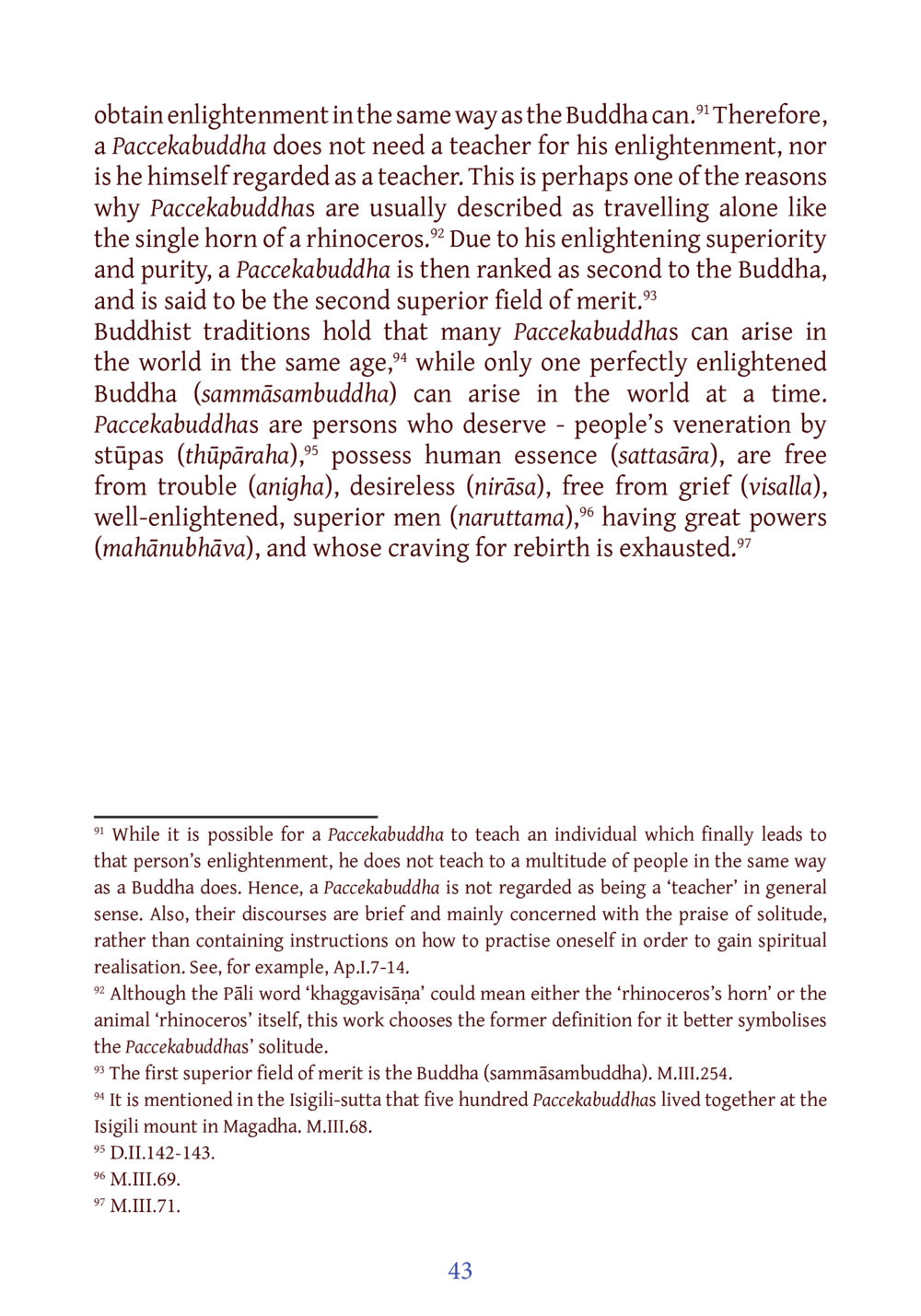Understanding Paccekabuddhas in Buddhism : หน้า 64/141
DIRI Journal : หน้า 64/141 An exploration of the role of Paccekabuddhas in Buddhism and their unique approach to teaching enlightenment.
9 ครั้ง

สรุปเนื้อหา
The text discusses the distinct nature of Paccekabuddhas, who can guide individuals toward enlightenment but do not teach the masses like Buddhas. Their teachings emphasize solitude and are succinct, lacking detailed instructions for spiritual practice. The term 'khaggavisāṇa', referring to the rhinoceros's horn, is utilized to symbolize their isolation. Notably, the first superior field of merit is identified as the Buddha, and historical references are made to groups of Paccekabuddhas, such as those dwelling at Isigili mount in Magadha. This examination offers insights into the unique attributes and contributions of Paccekabuddhas within the broader Buddhist context. For further details, visit dmc.tv.
หัวข้อประเด็น
-Role of Paccekabuddhas
-Teaching methods of Paccekabuddhas
-Symbolism in Buddhism
-Buddha vs. Paccekabuddha
-Community of Paccekabuddhas
ข้อความต้นฉบับในหน้า
หน้าหนังสือทั้งหมด













































































































































